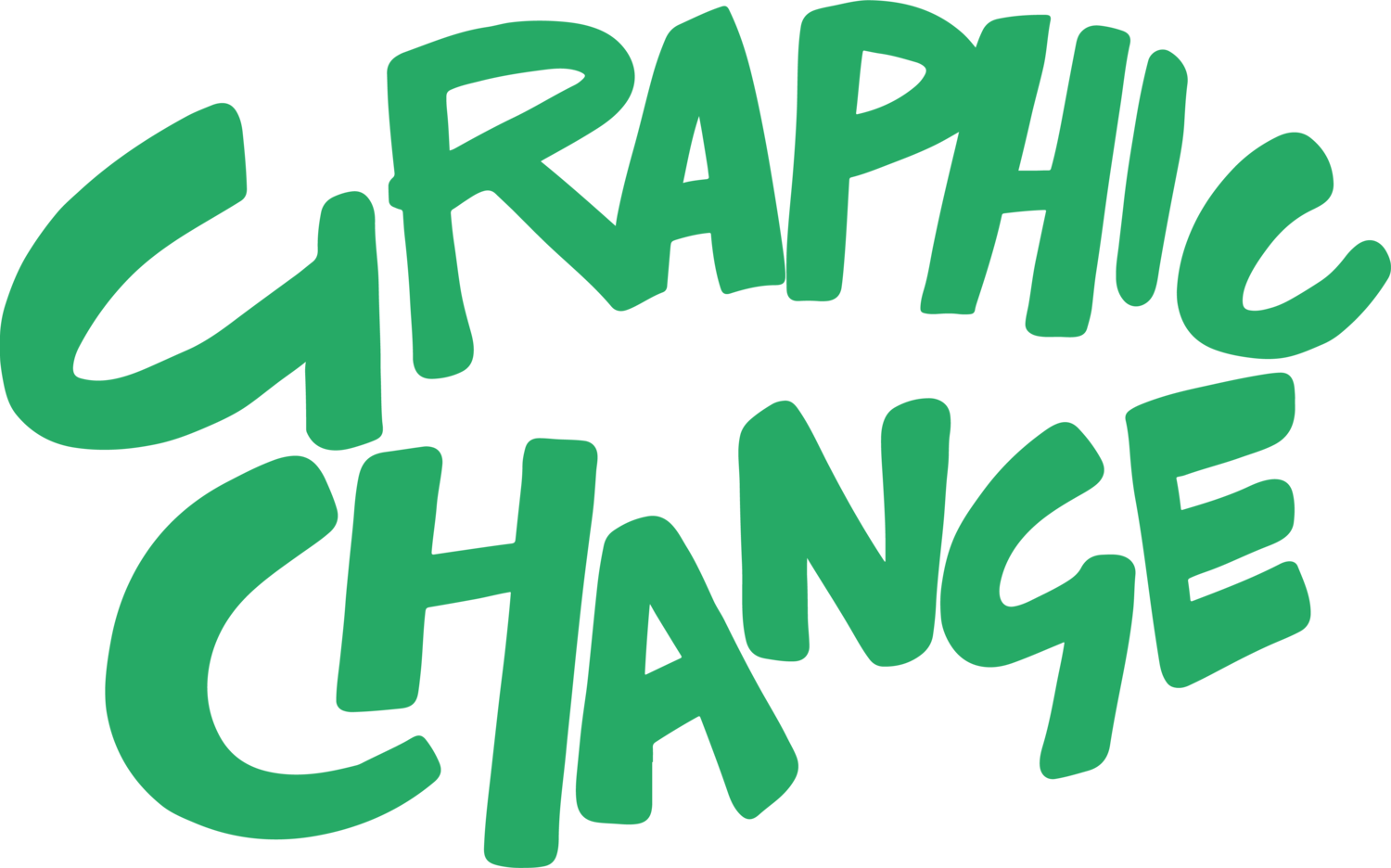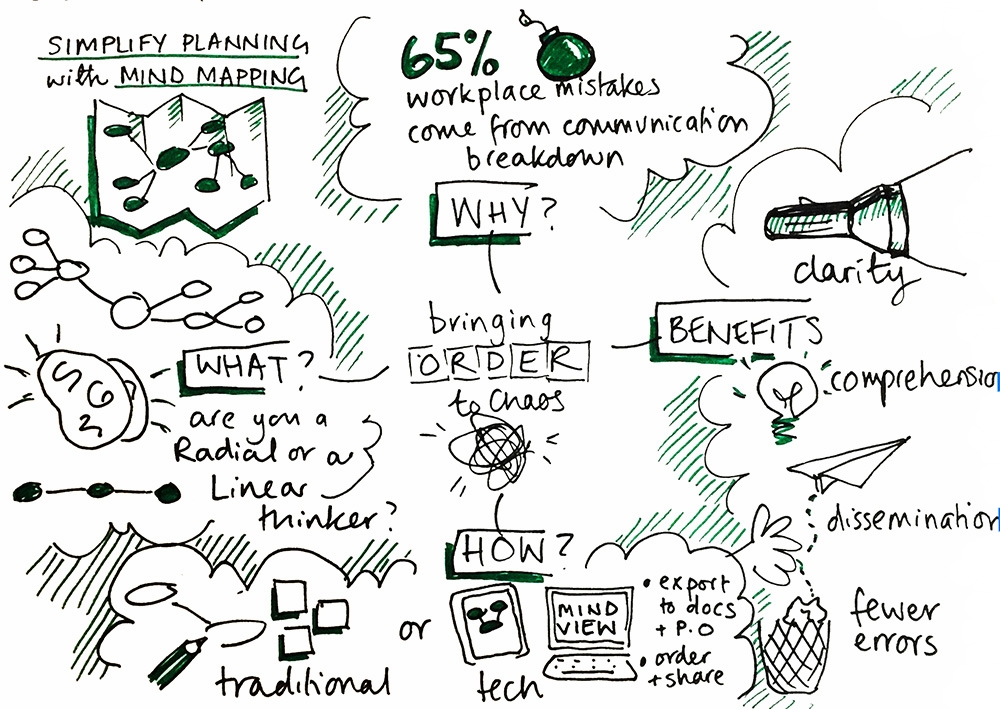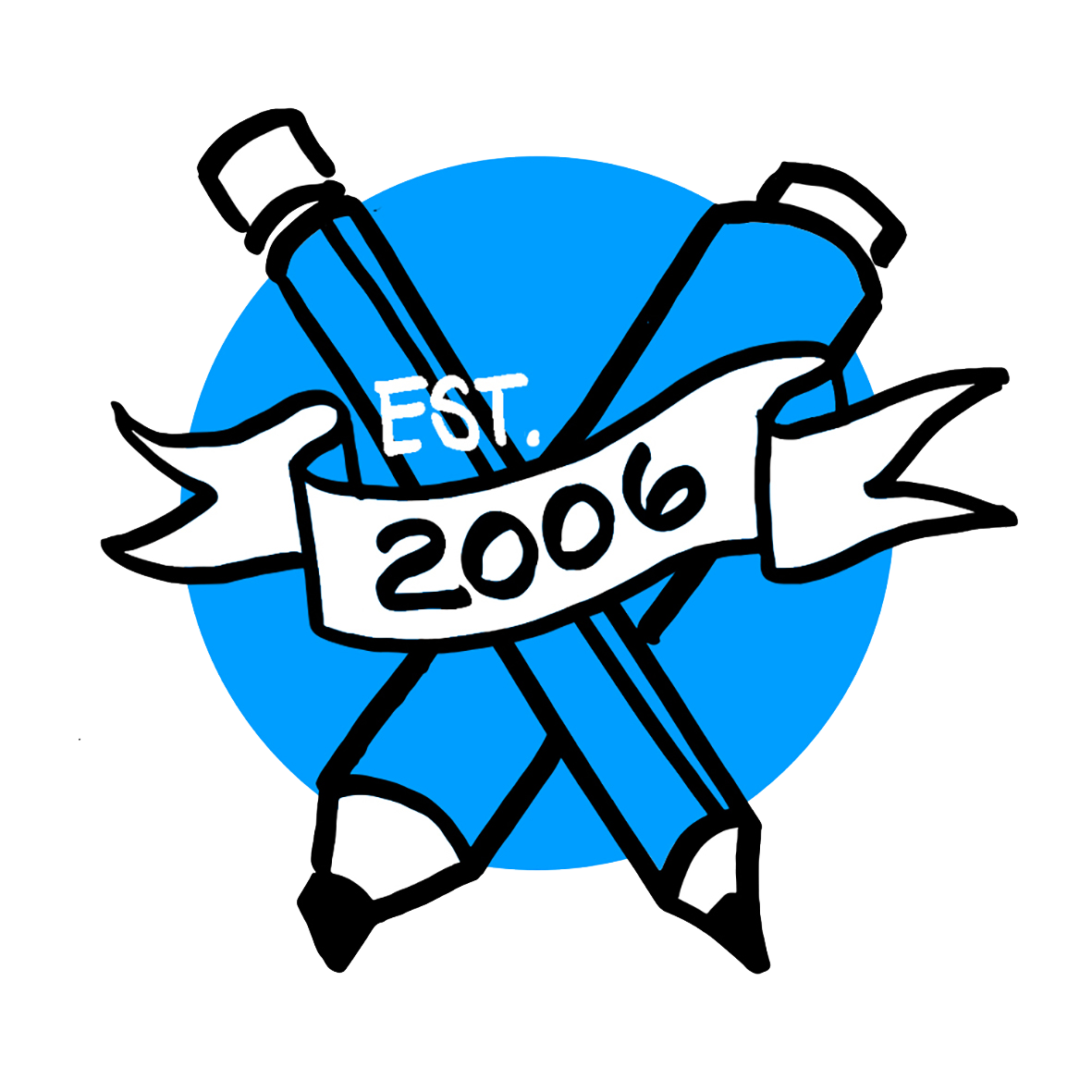We're all familiar with the mind map right? It's there in the toolkit of every visual worker, note taker, planner and student...but when was the last time you used it? (note: If you're not sure what I'm talking about then look up Tony Buzan who first brought us the mind map way back in the sixties).
I confess mind maps had fallen to the bottom of my mental toolkit. Mind maps were to be found down in the shadows, gathering dust under the novelty shaped post its and the rubber band ball. In fact it was only the fact that I was clearing out some drawers ready to move into our new office, that I came across a quick sketchnote I made a while ago, about... mindmaps.
Looking at my little sketchnote with fresh eyes, got me thinking about how very useful mindmaps can be when you have a big heap of thinking to make sense of.
Like a book outline for example...
Yes I'm writing a book. Draw a Better Business will be full of visual tools, and techniques, for small business owners and freelancers. It is of course a very exciting project, but it's also daunting.
You see it's my first book, and as any of you have been there before me know, a lot of planning is involved. I mean a LOT of planning. A handy spreadsheet was suggested to me as a tool to plan out the framework of my book, but this just led to brain freeze...and ultimately to panic as I lost my flow.
And then I found my dusty sketchnote, about my old neglected friend the mindmap, and (drumroll please...) ta dah! The planning process was back where it belonged, as an integral part of my creative process.
It's a perfect tool for giving yourself a visual overview, or for helping you connect or trigger new ideas. It's also an incredibly easy skill to learn and to use in your business.
Now I need a little disclaimer here... I know there a lot of digital mind-mapping tools out there, but they're not what I'm talking about here.
For me the important part of mind mapping is the act of holding a pen, and drawing on paper. This is a creative act that triggers creative thinking.
The drawing of a mind-map is much more than a capture of content or a fancy list. It is a visual tool that helps you reach conclusions and identify themes and connections more effectively, precisely because it is a hand drawn, visual tool.
So if like me, you've let your mind mapping skills get a bit dusty, here's the lowdown on how to mind map like a champ.
Step 1
Grab a sheet of paper, a writing pen and some coloured pens or felt tips.
Step 2
Turn the sheet to landscape. There's no mind mapping rule book, but generally, working with your paper in landscape gives your ideas more room to spread and to grow.
Step 3
Put your big idea, question or issue in the centre of the page.
If you're doing a mind map to help you remember content, then I'd encourage you to use an image or a picture in the middle. Pictures are great mind hooks that help you to remember content for longer. BUT, it's not essential, as I said earlier there's no rule book, so go with what feels right for you. Here I've used a coloured circle along with the name of my book as my central point.
Step 4
I wanted to develop a framework for my book, so for me, the first tier of my mind map was to think of potential chapter headings.
Draw a branch that stems from your centre point out to your new secondary idea or theme. Draw a node or an image to represent the new point. Repeat this step for each secondary idea.
You can see I thought of 5 chapter headings. My mind map ended up with 5 branches leading to 5 new nodes, 1 for each chapter heading. Now you'll notice it's not a precision exercise. My nodes aren't exact circles, my writing isn't perfect, but that's all okay.
What I have done to help my brain differentiate between the branches is make each new node (my chapters) a different colour. Of course you could also have drawn an image along side each node.
Step 5
Next I've repeated the process for another round. I took each of my 5 chapters in turn and I brainstormed potential subheadings. These went into boxes, again to help my brain differentiate between the levels of content. I kept each branch and subset the same colour so that it is easy to follow.
This mind map could now grow and grow. In fact if you scroll up to the mind map picture further up the page, you will see that in this case it did indeed keep spreading to a total of 130 nodes!
A pretty effective way of unlocking brain freeze.
Of course every mind map is individual. Yours might be much simpler or much more complicated. Don't worry if yours isn't as orderly as this. You don't have to work in concentric layers of content. You can of course follow one thread, all the way out, before you even look at the next one. Remember there's no rule book, you're free to let your mind map wander wherever the information, and your imagination, takes it.
It's such a simple tool, but it punches above it's weight in terms of usefulness. It wakes your brain up by engaging a full range of cortical skills such as logic and spatial skills as well as engaging your imagination. Mind mapping allows your brain to follow branches of thought to new conclusions, helping you have ideas and make connections in a way that writing a list, or thinking in your head just can't do.
So if you think you know mind mapping, but you haven't taken it out of your visual toolkit for a while, why not pull it out from the shadows, dust it off and have a go? Let your mind map take you where it will, enjoy the journey and watch those ideas grow.
Here at Graphic Change we work with individuals and businesses helping them to get the benefits of working more visually.
To find out more about our online courses, head over to the Graphic Change Academy.
Or buy my book Draw A Better Business.
If you enjoyed this read, let us know by clicking the "like" below, and share it forward with the other visual thinkers in your life.










